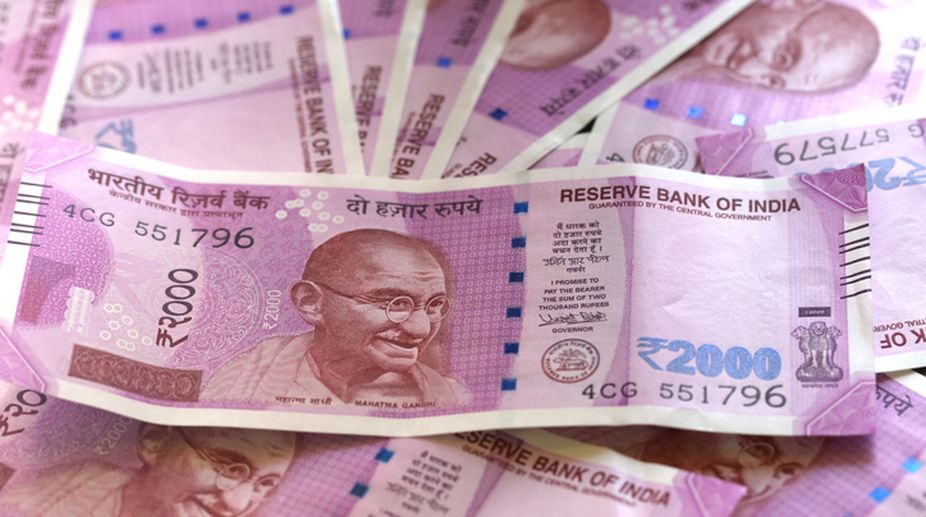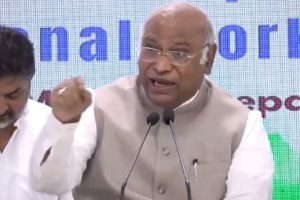The political reluctance in matters of taxation and enforcement is pronounced. Governments lose several thousand crore each year owing to collusion between revenue officers and assessees. There is very limited reconciliation of revenues between revenue collection agencies, their accounts officers and receiving banks. CAG’s customs audit report for 2015-16 reports that 89 indirect tax commissionerates shows gross amount of Rs.6.20 lakh crore as unreconciled. Even if a single per cent of revenue were not paid at all or was showed as having been paid (using forged bank stamps and pay-in forms), this would amount to a whopping Rs.6200 crore, enough for about 2.43 lakh jobs paying Rs 20000 per month and bringing 4-5 times that many people well above the poverty line. Owing to the cash basis of government accounting, the quantum of revenue lost by lack of enforcement owing to their own ranks never figures in the annual accounts. As if this were not enough, extortion at toll gates takes its own toll as legitimate revenues of the state are converted into private wealth and then applied to various purposes, mostly illicit. Tax demand notices likewise are often inspired and adjudication often ends up costing more than the settlement terms. All this while governments live off borrowed moneys.
While low global oil, commodity and shipping prices allowed the Government of India the luxury of raising central excise on imported oil, 2016-17 and onwards is seeing a rise to $60 dollar/barrel levels. This would invariably reduce the Government’s fund-raising capacity. Cesses are not ad hoc substitutes for revenue collection by manufacturing that shows few discernible signs of revival. Cesses collected over the years that ought to run into several lakh crore, notably on education, are nowhere manifest in our educational institutions while state spending steadily declines in this sector, as in many others. Governments in India no longer have the financial muscle to enhance spending much more nor incentivise consumer spending by tax rebates notwithstanding political grandstanding. What then of alternative financing from India’s financial institutions (FI)?
Advertisement
Defaulted dues are of broad types ~ non-performing assets (NPAs) and restructured debts (CDRs). When a loanee fails to pay back principal and interest when instalments are due, nor is there any prospect of their business being revived by FI intervention, it is declared an NPA. On the other hand, CDRs are attempted bailouts by loaning FIs by extension of time (e.g. owing to adverse business scenario, sudden change in state policies, etc.), conversion of debt into equity or by management participation of the loanee entity. Over the years, PSBs have suppressed their actual NPAs by the subterfuge of sanctioning many more loans than those defaulted. CDRs partly supplemented PSB efforts by staggering declaration of NPAs in misrepresentative but audited PSB balance sheets. GNPAs of PSBs in the last five fiscals rose three-fold. As of December 31, 2016, of every Rs 100 loaned by PSBs, Rs 11 is in default. These figures do not include NPAs en route in the form of CDRs that may multiply this figure alarmingly given the steadily worsening domestic and global economic scenario.
Recently, a former Deputy Governor of the RBI, Dr KC Chakrabarty, estimated that NPAs, as on date, were about Rs.20 lakh crore. Obviously, this figure could stretch into an unknown abyss and did not include historical loan waivers over the last 2-3 decades. Some PSBs like IOB and UCO Bank have GNPA in the range of 17-23 per cent. For IOB, gross bad loans are more than 2.5 times its net worth; both UCO Bank and United Bank of India have eroded their net worth by at least double while IDBI Bank is 1.3 times negative in its net worth. These worrisome figures do not include loans given to projects where the dates of commencement of commercial operations had passed, but the projects had failed to take off, presumably mostly in the infrastructure and telecom sectors. At the same time, international conventions demand a minimum percentage of liquidity that banks must maintain viz. Basel-III. Although PSBs currently comply with these norms, a rapid rise in NPAs in the coming months, matched by poor recovery record, could cause them to fall below these stipulations. The Indradhanush plan of the Department of Financial Services, Ministry of Finance of August 14, 2015, estimated the extra capital requirement up to 2019-20 at about Rs 1.80 lakh crore. This estimate was based on credit growth rate of 12 per cent for the current year and 12 to 15 per cent for the next three years depending on the size of the bank and their growth ability. It was also presumed that the emphasis on PSBs financing would reduce over the years by development of vibrant corporate debt market and by greater participation of private sector banks. Accordingly, budget provision of Rs 25000 crore each in 2015-16 and 2016-17 and Rs 10000 crore each in 2017-18 and 2018-19 was proposed in Budget 2016-17. Owing to revenue shortfalls and rising revenue expenditure, the full amount has not been paid in most fiscal years. This tendency would only be exacerbated in 2017-18 and onwards. Obviously, such ad hoc allocations for recapping PSBs take away development funds from the public exchequer and are not a sustainable solution. Further, ever-rising NPAs cast a shadow on the Department of Financial Services’ estimates of Rs 1.80 lakh crore required for recapping PSBs.
At the same time, Budget 2017-18 proposed the creation of a Distressed Assets Agency (DAA) to which distressed loans of PSBs would be transferred and that would look for buyers for them. Although the fine print on financial arrangements for DAA is not yet in the public domain, there are grave doubts about the Government of India’s ability to bankroll the share capital for such an entity. It bears recall that the collapse of Lehmann Brothers in 2008-09 in the US was rooted in its taking over distressed housing assets from Wall Street banks and then not being able to sell them, although pay-outs for such takeovers were met by Wall Street banks, acting individually or in consortium mode. A similar situation could happen if, for instance, builders were to attempt to sell apartments and commercial buildings in the ghost towns on the Greater Noida Expressway since the sale value would be appreciably lower (maybe 40-60 per cent) than what is owed to financing agencies, a very likely event. Even if they refinanced their defaulted loans with fresh lower-interest ones from PSBs (after recent interest rate cuts), no real accretion to infrastructure development would occur while the option of further default remains omnipresent. PSBs, now increasingly, under close watch of vigilance and investigative agencies, are also loath to loan further funds.
With such huge pressure building on it, the Government of India is left with very few options. Accordingly, over the last year or so, relatively healthy CPSUs are mandated to return a minimum 30 per cent of their net profits to the Government as dividend. With looming wage revisions, many CPSUs that are holding companies are now resorting to milking their subsidiaries for their cash balance to pay off dividend. For others whose profits are recession-hit or minimal, the choice is to dip into their reserves. Recently, the Ministry of Railways reportedly protested to the Finance Ministry against the latter’s demand for transfer of Rs 850 crore dividend earned by 14 Railway CPSUs after the merger of the Rail and General Budgets in 2017-18, stating that such transfer would only add to the shortfall in railway earnings. Compounding these is RBI’s recent decision to cut back its dividend to 12 per cent in order to absorb costs of printing new post-demonetisation currency. The Government, mainly via its FIs, also owns large chunks of shares of the private corporate sector. Companies/FIs like ITC (34.43 per cent), ACC (14.66 per cent), Axis Bank, L&T (45 per cent), Bharti Airtel, Gammon India (63.4 per cent), Monnet Ispat (50.14 per cent) and Tata Steel (19.66 per cent) have several lakh crore rupees of government investment in them. Faced with an unenviable situation, the government has now started divesting part of such holdings, some in the open market, and the rest being picked up by state FIs such as LIC. Many relatively healthy CPSUs have also been coaxed in the past year into buying back government shares that have reduced their liquidity further, at least till their next IPO. Given the less than average performance of the stock market, offloading shares of CPSUs is unlikely to garner huge resources, even when the government has recently listed its four general insurance companies.
With President Trump promising large public-private sector investments in America’s crumbling infrastructure, interest rates would invariably rise and cause FDI to flow back from India to the safer confines of the US that may depress Indian bourses even more, and, with it CPSU divestment offerings. The layman understands that unless consumer incomes rise (with employment), demand will remain depressed. In turn, this will depress manufacturing and along with it, supporting services. Momentary spikes in GDP from increased revenue collection owing to extraneous reasons are not much cause for optimism. A stasis has emerged in which all expecting fingers are pointed towards governments that do not have large-scale spending wherewithal any longer and must rely on increased borrowing. Stop-gap measures like the ones stated in the preceding two paragraphs eat into the nation’s cash reserves, particularly when ploughed into revenue expenditure and uncertain public projects. The Union Finance Minister’s job has never been as unenviable, not even in 1989-90.
(Concluded)











